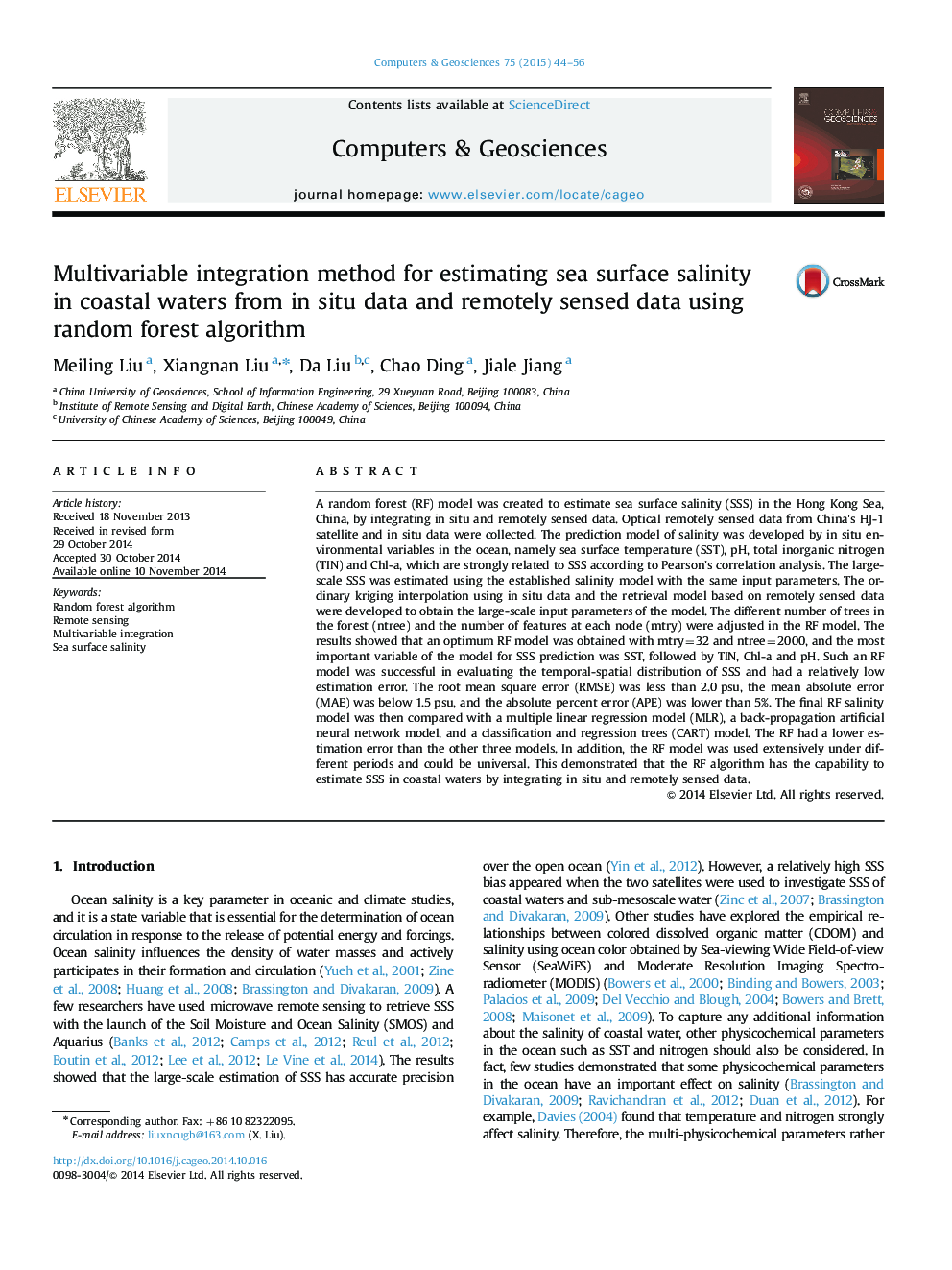| کد مقاله | کد نشریه | سال انتشار | مقاله انگلیسی | نسخه تمام متن |
|---|---|---|---|---|
| 6922648 | 865067 | 2015 | 13 صفحه PDF | دانلود رایگان |
عنوان انگلیسی مقاله ISI
Multivariable integration method for estimating sea surface salinity in coastal waters from in situ data and remotely sensed data using random forest algorithm
ترجمه فارسی عنوان
یک روش ادغام چند متغیره برای برآورد شوری سطح دریا در آب های ساحلی از داده های درونی و داده های سنجش شده از راه دور با استفاده از الگوریتم تصادفی
دانلود مقاله + سفارش ترجمه
دانلود مقاله ISI انگلیسی
رایگان برای ایرانیان
کلمات کلیدی
الگوریتم جنگی تصادفی، سنجش از دور، ادغام چند متغیره، شوری سطح آب
موضوعات مرتبط
مهندسی و علوم پایه
مهندسی کامپیوتر
نرم افزارهای علوم کامپیوتر
چکیده انگلیسی
A random forest (RF) model was created to estimate sea surface salinity (SSS) in the Hong Kong Sea, China, by integrating in situ and remotely sensed data. Optical remotely sensed data from China's HJ-1 satellite and in situ data were collected. The prediction model of salinity was developed by in situ environmental variables in the ocean, namely sea surface temperature (SST), pH, total inorganic nitrogen (TIN) and Chl-a, which are strongly related to SSS according to Pearson's correlation analysis. The large-scale SSS was estimated using the established salinity model with the same input parameters. The ordinary kriging interpolation using in situ data and the retrieval model based on remotely sensed data were developed to obtain the large-scale input parameters of the model. The different number of trees in the forest (ntree) and the number of features at each node (mtry) were adjusted in the RF model. The results showed that an optimum RF model was obtained with mtry=32 and ntree=2000, and the most important variable of the model for SSS prediction was SST, followed by TIN, Chl-a and pH. Such an RF model was successful in evaluating the temporal-spatial distribution of SSS and had a relatively low estimation error. The root mean square error (RMSE) was less than 2.0Â psu, the mean absolute error (MAE) was below 1.5Â psu, and the absolute percent error (APE) was lower than 5%. The final RF salinity model was then compared with a multiple linear regression model (MLR), a back-propagation artificial neural network model, and a classification and regression trees (CART) model. The RF had a lower estimation error than the other three models. In addition, the RF model was used extensively under different periods and could be universal. This demonstrated that the RF algorithm has the capability to estimate SSS in coastal waters by integrating in situ and remotely sensed data.
ناشر
Database: Elsevier - ScienceDirect (ساینس دایرکت)
Journal: Computers & Geosciences - Volume 75, February 2015, Pages 44-56
Journal: Computers & Geosciences - Volume 75, February 2015, Pages 44-56
نویسندگان
Meiling Liu, Xiangnan Liu, Da Liu, Chao Ding, Jiale Jiang,
